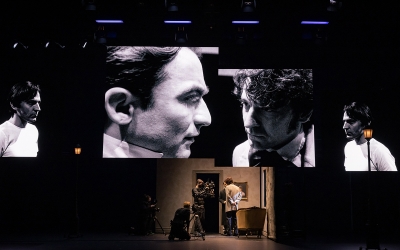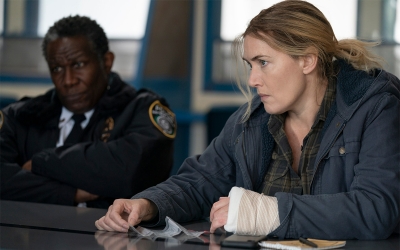Guy Webster

Guy Webster is an academic and writer living on unceded Wurundjeri land. His work has been published by ABR, Overland, Metro Magazine, Kill Your Darlings, and The Conversation. He is currently finishing his doctorate at the University of Melbourne.
This month Sydney is host to two productions inspired by Robert Louis Stevenson’s novella Strange Case of Dr Jekyll and Mr Hyde (1888). The first, from Sydney Theatre Company, signals director Kip Williams’s return to the Roslyn Packer Theatre following the success of his 2019 production, The Picture of Dorian Gray. The second, from director Hayden Tee, offers a subversive revival of the much- ... (read more)
Early on in Jonny Hawkins’s Maureen: Harbinger of Death, Maureen invites an audience member to light her cigarette. The man she chooses, like most audience participants, hesitates. She beckons him with a wry smile. As he wanders on stage, she immediately notices his bare face. She presents him with a mask – coordinated perfectly to the colour of her room and attire – and remarks: ‘He has a ... (read more)
Not long into Will Arbery’s Heroes of the Fourth Turning a character brings out an acoustic guitar and is asked to play a song. He chooses Townes Van Zandt’s ‘Nothin’’, a melancholy ballad pulled from the annals of American folk music. When it was released in 1971, many assumed it represented Van Zandt’s struggle with drug addiction. In fact, as he explained two years before his death, ... (read more)
Since its première in 1949, Arthur Miller’s Death of a Salesman has managed to cling to cultural relevance with a vice-like grip. In 1975, New York Times critic Walter Goodman saw in its evocation of the American middle class the perfect representation of a nation-wide recession following the Vietnam War. In 1984, the play’s titular salesman, Willy Loman, became the symbol of a dwindling midd ... (read more)
While watching HBO’s newest whodunnit series, Mare of Easttown, I was reminded of another crime-fiction drama, The Sopranos (1999–2007). When Marianne ‘Mare’ Sheehan (Kate Winslet) arrives early for a court-ordered therapy session in the series’ fourth episode, I thought of Tony Soprano sitting down for the first of many similar appointments with his therapist, Dr Melfi. Reclining in a c ... (read more)






